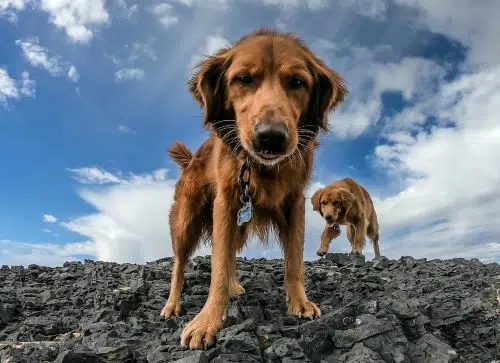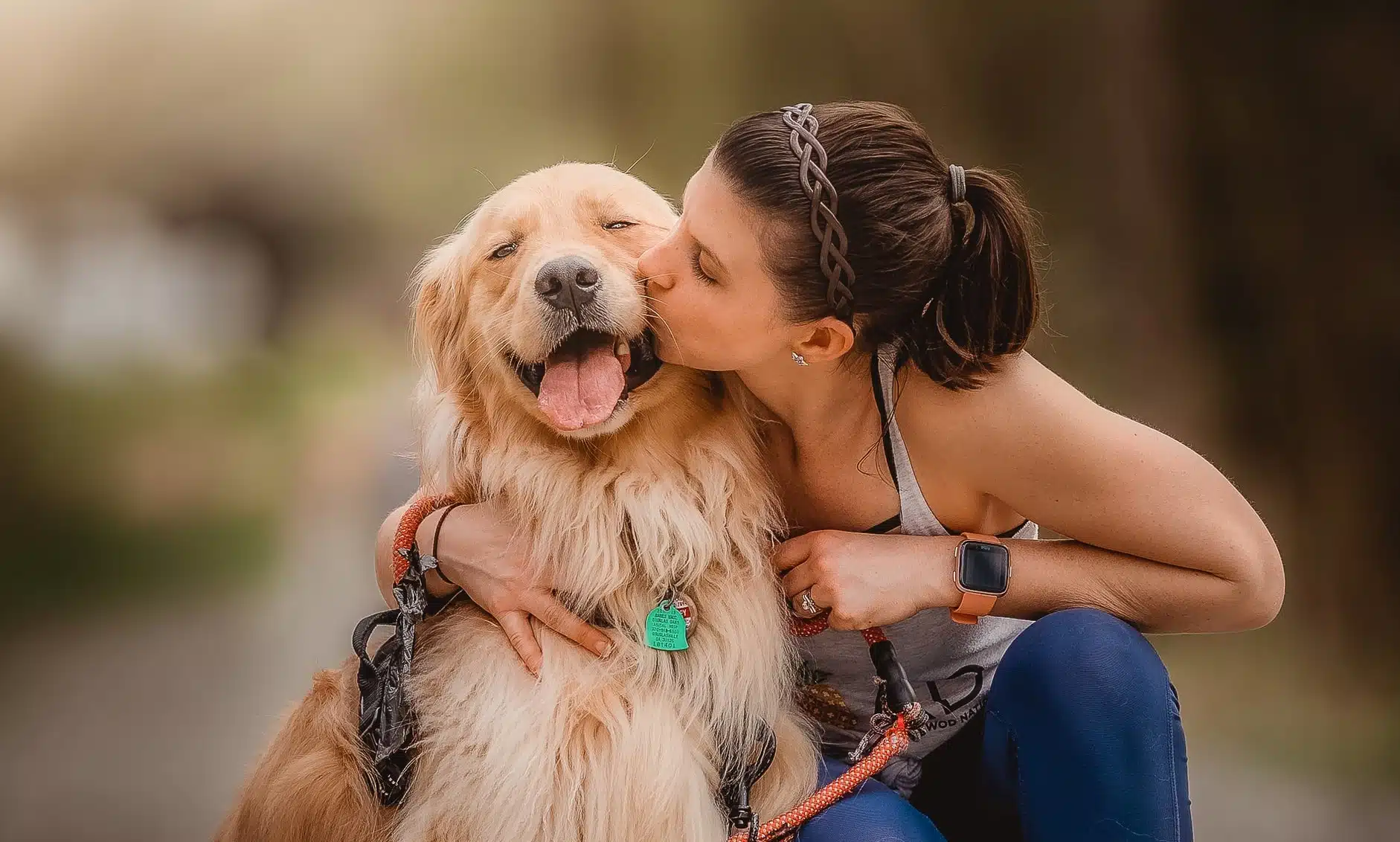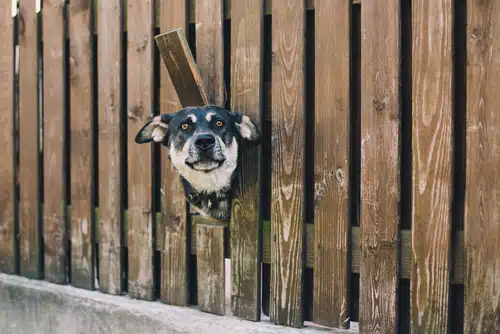Home » Blog » Pet » Pet Parenting Lifestyle » Keeping Coastal Wildlife and Dogs Safe for Australian Wildlife Week
Categories
Tags
animal welfare
breed profile
buying a car
buying a pet
Car
car accessories
car care
car features
car insurance
Car safety
car sales
car service
cat
cat behaviour
cat body language
Cat Breeds
cat food
cat insurance
comprehensive car insurance
Dog
Dog Behaviour
dog body language
Dog Breeds
dog food
Dog Insurance
dog training
eco friendly cars
Kitten
New Car
pet accessories
pet activities
Pet Adoption
pet breeders
pet days of the year
pet fun stuff
Pet Health
pet insurance
pet parenting
Pet Safety
pet services
Puppy
rescue pets
road safety
road trip
safe driving
Recent Blog:
Facebook Posts
1 day ago
True or false: A stiff brake pedal can stop your car from starting? Answers here…![]()
![]() 3 Reasons For a Stiff Brake Pedal and Car That Won't Start –
... See MoreSee Less
3 Reasons For a Stiff Brake Pedal and Car That Won't Start –
... See MoreSee Less
3 Reasons for a Stiff Brake Pedal and Car That Won't Start
www.pd.com.au
Help! My car isn't starting and the brake pedal is stiff - why?! First of all, if your brake is stiff and car won't start then you've already pieced3 days ago
Growing old sometimes means we can’t take care of pets anymore. Find out some advice on what to do when this happens:![]()
![]() Senior Pet Parents – Contingency Plans for Your Pet –
... See MoreSee Less
Senior Pet Parents – Contingency Plans for Your Pet –
... See MoreSee Less
Senior Pet Parents' Contingency Plans for Pets
bit.ly
Sometimes senior pet parents need more downtime. For older pet owners, this can be tricky to navigate if their dog or cat is full of beans and wants to5 days ago
Celebrating World Vet Day by expressing our gratitude to all the wonderful vets out there! You're the real heroes for our fluffy companions. #WorldVetDaye#ThankYouVetsu#PDPetsdpets
... See MoreSee Less
It’s spring and we Aussies are celebrating Australian Wildlife Week hot on the heels of our Kiwi cousins’ Conservation Week! With warming temperatures, we’ll likely be spending more time at beaches, rivers and lakes with our dogs. Responsible dog ownership and beach safety should be front of mind, together with the safety of our surroundings.
As an award winning pet insurance provider, PD Insurance is devoted to helping dog owners reduce their pawprint on the environment. Pet parents can take some simple steps to ensure our dogs and the wildlife they encounter are both well protected, now and into the future.
Here’s how.
When is Australian Wildlife Week?
Australian Wildlife Week is held on the first week of October every year. A week is better than a day. But even better is when our awareness of natural resources becomes part of every day life.
Let’s begin sea change now, and every day going forth, starting with Australian Wildlife Week.
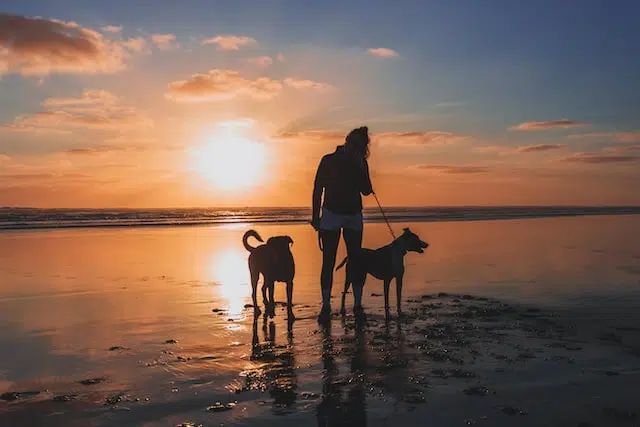
Australian Wildlife Week / Conservation Week NZ
Clearly there’s a link between Australian Wildlife Week and NZ’s Conservation Week happening in tandem. We’re moving in lockstep to understand, navigate and protect the natural world we inhabit. As people and as responsible dog / pet owners we’re learning and looking for the best ways to appreciate and engage with the environment in positive ways.
– Dr Julie Old, President of the Australian Wildlife Society
“We hope to raise awareness of wildlife conservation issues across Australia and inspire all Australians to explore and develop a deeper understanding of these issues, gain the necessary skills to make informed decisions, and implement wildlife conservation action where possible.”
As we become more aware of the environmental impacts of human habitation it’s clear that land and border boundaries are less important than standing together. COVID-19 also showed us that it’s time for change. Less important than groups, nations and hierarchies is the fact that we’re one human race, one that needs to be united in our efforts to love and care for nature.
Humans and pets are a part of the natural environment, but at times our relationship with it is antagonistic. That’s clearly not how we want to progress. Did you know that dogs and cats can do damage to wildlife species, both unintentional and intentional? Read this ‘5 Ways To Get Involved On World Wildlife Day 2023‘ article to learn more.
Let’s be more aware by practicing responsible dog ownership and beach safety for Australian Wildlife Week, with a nod to Conservation Week.
Here’s a list of Australian Wildlife Week events you can enjoy:
- Art Display. Australian Wildlife – A journey through time
- Video Competition. The winning footage will be part of the art display at Hurstville Museum and Gallery
- Online Webinar. A showcase of wildlife research and conservation projects in Australia
Next we have some simple lifestyle steps you can take to be more wildlife wise with your pup.
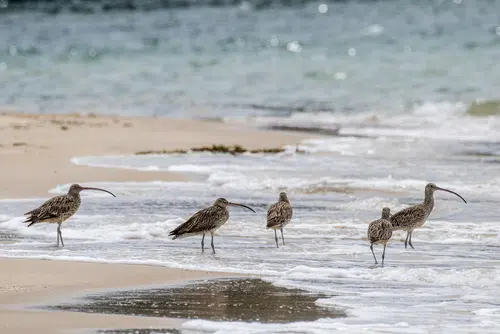
🐶 Protect Australian wildlife with responsible on-lead dog ownership
Responsible dog ownership is about understanding that a dog’s bark can be just as big as its bite. Even when dogs roam the shoreline, they can potentially displace at-risk wildlife or destroy their habitat.
Already 100 species are known to have gone extinct in Australia since European colonisation in 1788.
– Wildlife Stories, The Nature Conservancy Australia
Beaches, coastal bushlands and nearby waterways are natural playgrounds for dogs. They’re also home to endangered and protected species. That’s why it’s important not to let your dog roam off-leash outside of designated off-leash areas. And even then, stay by your pup’s side rather than letting them explore solo.
Endangered coastal creatures deserve our respect
The Eastern Curlew shorebird is among many endemic animals that are critically endangered. Without our awareness as pet owners, we could unwittingly contribute to its decline. Each year, it flies between Australia, East Asia and Arctic Russia every year along its migration routes.
Just imagine touching down in Australia from global travels, only to be stalked by a curious dog! Dog beach safety is for the safety of our canines and our wildlife. Natural canine curiosity combined with a stellar sense of smell means dogs can stalk and injure endemic species just by sniffing them out. A dog can do harm without being aggressive or biting.
A dog sniffing around in some long grass can easily displace nesting birds. They may lose their home and their hatchlings, and all it looks like to nearby humans is a dog sniffing around in some grass. Not sure what leash to use? Read our guide to dog leashes and leads.
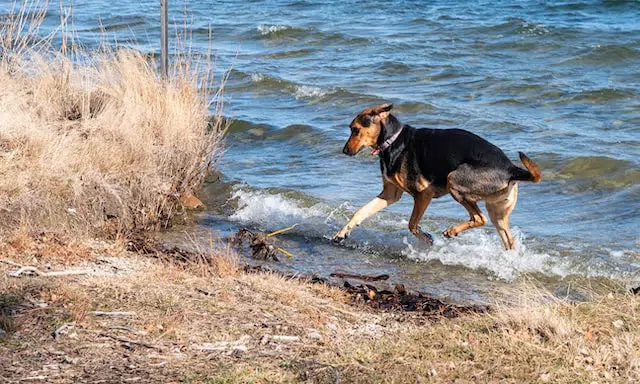
🐶 Dog beach safety
Whether you’re travelling with pets on the road over many days, or just going for a day trip be aware of dog poisoning risks. Some animals and plants can be deadly when accidentally swallowed. Even those that are ‘safe’ when fresh can carry extremely harmful bacteria when dead or rotting. Find out about some of these dangers in our article on pet water safety.
It’s natural for dogs to forage and explore; smell is their strongest sense and they follow their nose through vegetation and wilderness. Read ‘does my dog love me‘ for more on the neuroscience behind dog smell and emotional attachment to their owner.
A dog’s sense of smell is up to 40 times more powerful than our own. Dogs use smell for social interaction and can even pinpoint the direction the smell is coming from. It’s only natural they sniff (and taste) the objects they find in the environment around them.
Australian Wildlife Week is a good time to be aware dogs shouldn’t eat everything they chance upon – for their sake too. Besides the potential danger of poison, dog choking and ingestion can also be severe. In the past year accidental ingestion was one of the top claims for PD Insurance customers.
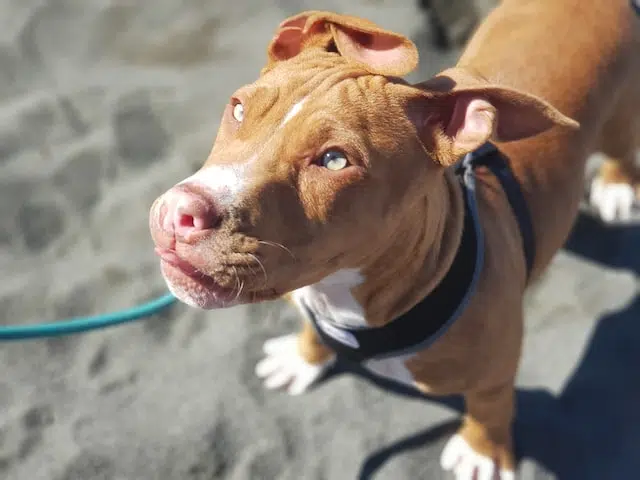
Australian Wildlife Week – conserve natural habitats
An Australian Wildlife Weekend getaway is a great way to celebrate and enjoy our bountiful land. Be sure you know the rules of the road for pets in cars when travelling with dogs or cats. This will help your journey go smoothly and make it less likely for something to go wrong.
That said, read our guide on what to do if you do hit an animal on the road while driving in Australia. (Although defensive driving skills should help prevent this). Whether you’re going inland, cross country or coastal, know your native habitats and keep them safe:
# Wet sand
The best place to walk your dog is along the wet sand where they’re least likely to affect native wildlife. That said, be aware many birds arriving after long migrations will forage in wet sand. Keep your dog on-leash (a long lead will give them freedom to move a fair distance away) and never let them chase birds.
Take a toy with to keep your dog happy and occupied and always scan before you head somewhere with pup. A sleeping fur seal, penguin or other coastal animal might look like rocks and seaweed if you don’t put your Australian Wildlife Week perspective on before marching in!
Make sure your dog doesn’t eat sand, too. Avoid playing catch with objects that will pick up sand because accumulative ingestion of sand can cause intestinal blockage. Remember dog safety and responsible dog ownership is part of Australian Wildlife Week.
# Dunes
Penguins and shorebirds shelter and nest in sand dunes. Some bird species roost higher up on the shoreline amongst driftwood.
When walking your dog it’s best to avoid sand dunes. Your dog’s presence can stress birds, using up energy stores they need to care for chicks or recover from migration.
Flightless birds such as Little Penguins that nest on some parts of our shoreline are particularly vulnerable to dogs. Watch this trailer from Oddball – based on a true Aussie story – of a heroic dog who protected a penguin sanctuary:
Responsible dog ownership is caring about safety
When celebrating Australian Wildlife Week and Conservation Week let’s consider how we and our dogs are part of the environment. Keeping our companion animals and our wild animals safe is equally important. Happily, the steps that lead to dog beach safety and responsible dog ownership are also good for wildlife.
So, you can keep two animals happy and healthy with one coastal safety plan! (By that, we mean companion animals and wild animals). 😊
Get your dog award winning pet insurance before you head out on the coast, so if they swallow a toxic sea creature or too much sand, or somehow get themselves injured, they can get the medical care they deserve. PD Insurance covers extensive pet health care needs and you get the first month or more FREE!
Click below to find out more.
Share On:

